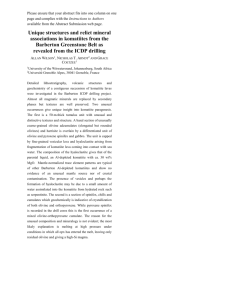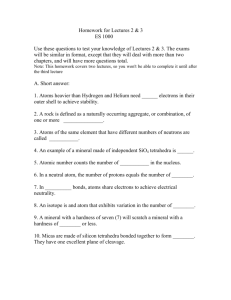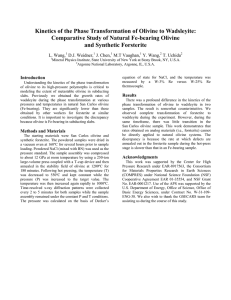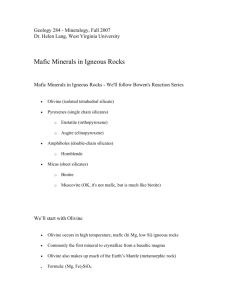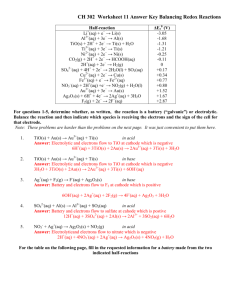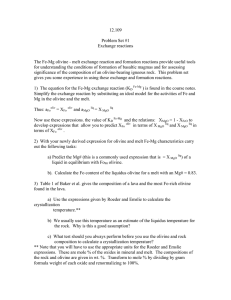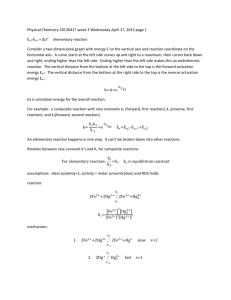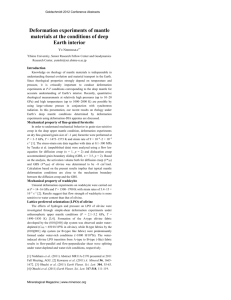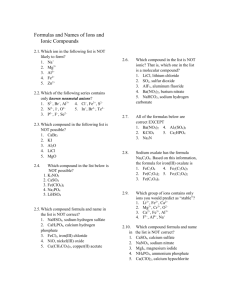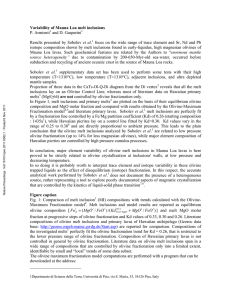Atomic and Charge Balance Constraints on whole Earth mineralogy
advertisement
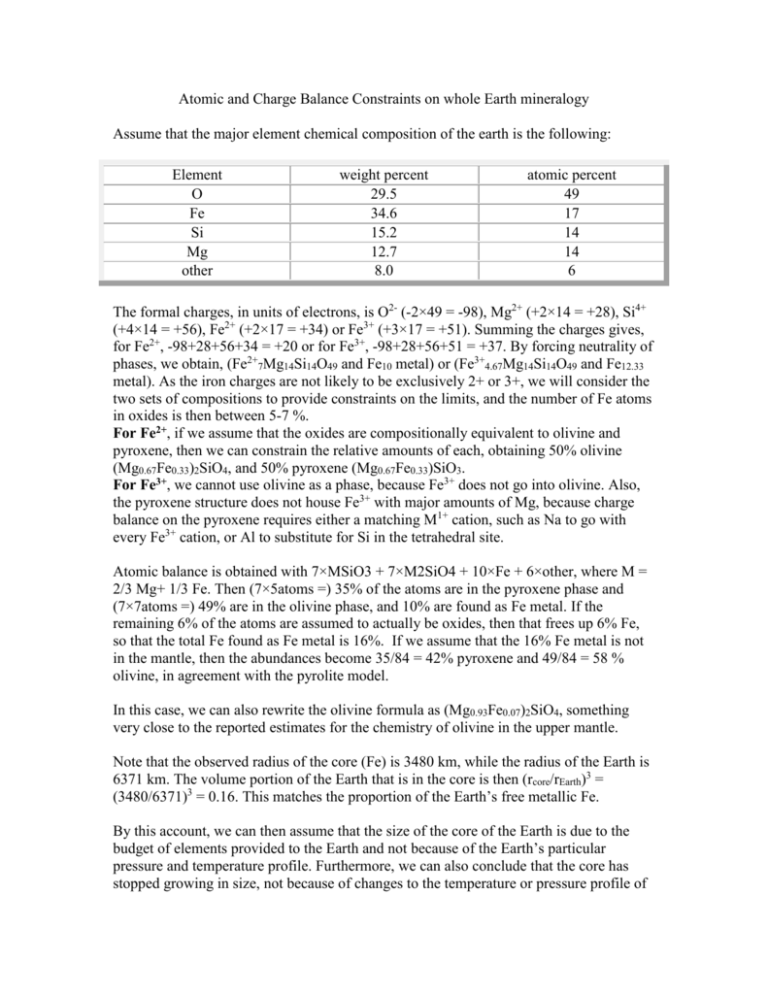
Atomic and Charge Balance Constraints on whole Earth mineralogy Assume that the major element chemical composition of the earth is the following: Element O Fe Si Mg other weight percent 29.5 34.6 15.2 12.7 8.0 atomic percent 49 17 14 14 6 The formal charges, in units of electrons, is O2- (-2×49 = -98), Mg2+ (+2×14 = +28), Si4+ (+4×14 = +56), Fe2+ (+2×17 = +34) or Fe3+ (+3×17 = +51). Summing the charges gives, for Fe2+, -98+28+56+34 = +20 or for Fe3+, -98+28+56+51 = +37. By forcing neutrality of phases, we obtain, (Fe2+7Mg14Si14O49 and Fe10 metal) or (Fe3+4.67Mg14Si14O49 and Fe12.33 metal). As the iron charges are not likely to be exclusively 2+ or 3+, we will consider the two sets of compositions to provide constraints on the limits, and the number of Fe atoms in oxides is then between 5-7 %. For Fe2+, if we assume that the oxides are compositionally equivalent to olivine and pyroxene, then we can constrain the relative amounts of each, obtaining 50% olivine (Mg0.67Fe0.33)2SiO4, and 50% pyroxene (Mg0.67Fe0.33)SiO3. For Fe3+, we cannot use olivine as a phase, because Fe3+ does not go into olivine. Also, the pyroxene structure does not house Fe3+ with major amounts of Mg, because charge balance on the pyroxene requires either a matching M1+ cation, such as Na to go with every Fe3+ cation, or Al to substitute for Si in the tetrahedral site. Atomic balance is obtained with 7×MSiO3 + 7×M2SiO4 + 10×Fe + 6×other, where M = 2/3 Mg+ 1/3 Fe. Then (7×5atoms =) 35% of the atoms are in the pyroxene phase and (7×7atoms =) 49% are in the olivine phase, and 10% are found as Fe metal. If the remaining 6% of the atoms are assumed to actually be oxides, then that frees up 6% Fe, so that the total Fe found as Fe metal is 16%. If we assume that the 16% Fe metal is not in the mantle, then the abundances become 35/84 = 42% pyroxene and 49/84 = 58 % olivine, in agreement with the pyrolite model. In this case, we can also rewrite the olivine formula as (Mg0.93Fe0.07)2SiO4, something very close to the reported estimates for the chemistry of olivine in the upper mantle. Note that the observed radius of the core (Fe) is 3480 km, while the radius of the Earth is 6371 km. The volume portion of the Earth that is in the core is then (rcore/rEarth)3 = (3480/6371)3 = 0.16. This matches the proportion of the Earth’s free metallic Fe. By this account, we can then assume that the size of the core of the Earth is due to the budget of elements provided to the Earth and not because of the Earth’s particular pressure and temperature profile. Furthermore, we can also conclude that the core has stopped growing in size, not because of changes to the temperature or pressure profile of the earth, but because there are no more free metal atoms to put there. All the rest of the metals are tied up in bonding to O. The only other way to change this is by losing O from the Earth, thus shifting the charge balance.

